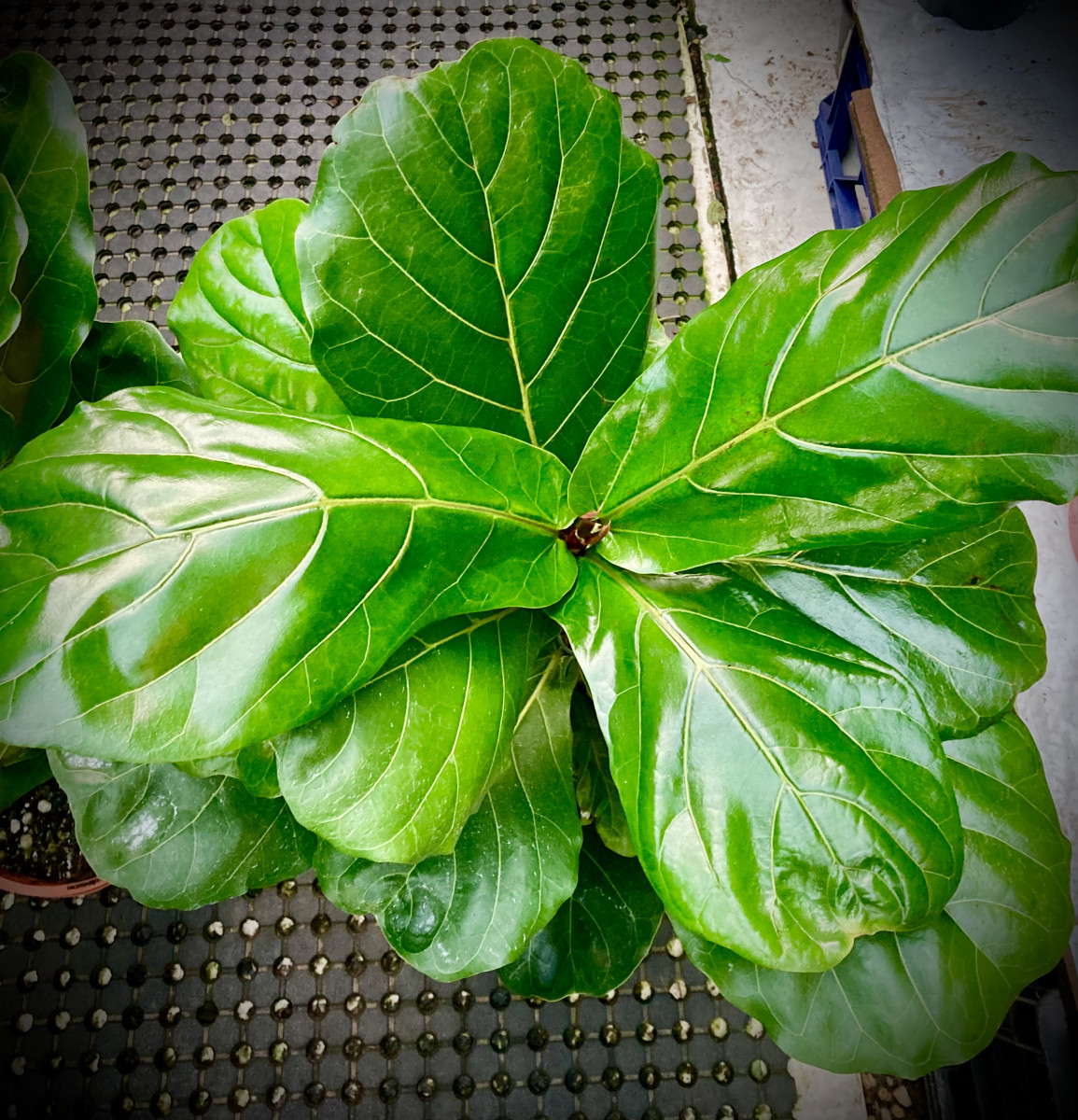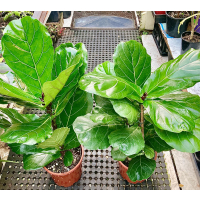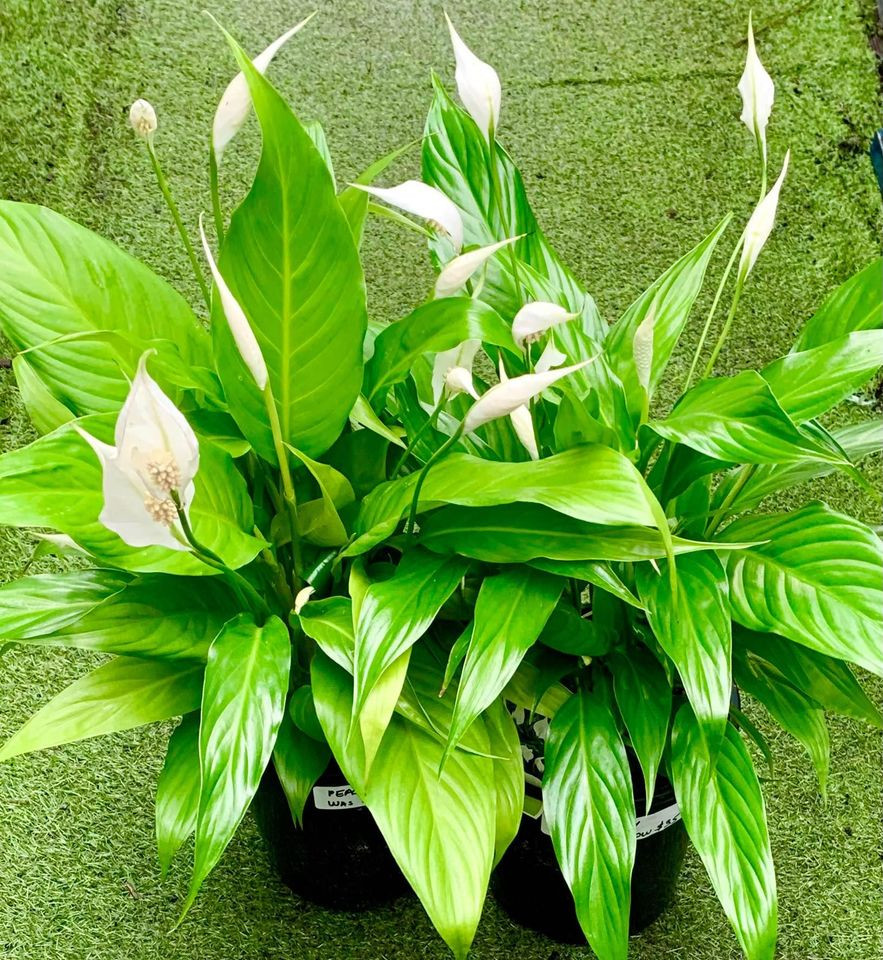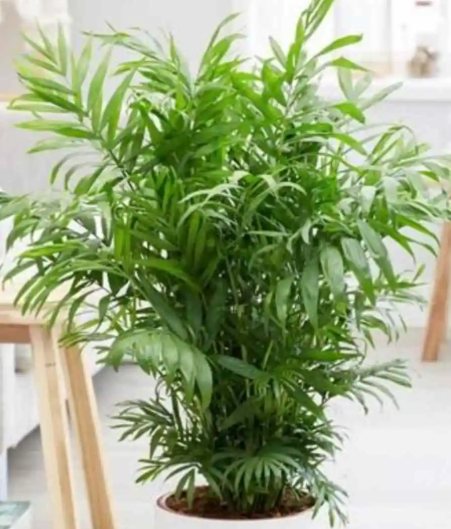

Fiddle leaf Figs
Category : Indoor Plants
Introduction
The Fiddle Leaf Fig, scientifically known as Ficus lyrata, is a striking evergreen tree renowned for its large, glossy, fiddle-shaped leaves. In its native tropical climates, it can grow between 15 to 30 meters tall. This plant has gained immense popularity as an indoor potted plant, often featured in interior design and styling for its dramatic and sculptural appearance.
Growing Conditions
-
Light Requirements
- Bright, Indirect Light: Fiddle Leaf Figs thrive in bright, indirect light. They can tolerate some direct sunlight, but too much can cause leaf burn. Ideal placement is near a north or east-facing window.
-
Temperature and Humidity
- Warm Temperatures: They prefer warm temperatures between 60°F to 75°F (16°C to 24°C). Avoid placing the plant near cold drafts or sudden temperature changes.
- Humidity: High humidity is beneficial for Fiddle Leaf Figs. Regular misting or using a humidifier can help maintain the necessary moisture levels, especially in dry indoor environments.
-
Watering
- Moderate Watering: Keep the soil consistently moist but not waterlogged. Water the plant thoroughly when the top inch of soil feels dry to the touch. Ensure the pot has good drainage to prevent root rot.
- Drought Tolerance: While they prefer regular watering, Fiddle Leaf Figs can tolerate short periods of drought.
-
Soil
- Well-Draining Soil: Use a well-draining potting mix. A mix designed for houseplants or one that contains peat moss, perlite, and pine bark is suitable.
- Soil pH: They prefer slightly acidic to neutral soil (pH 6.0-7.0).
-
Fertilization
- Balanced Fertilizer: Feed the plant with a balanced, water-soluble fertilizer every 4-6 weeks during the growing season (spring and summer). Reduce feeding during the fall and winter.
Maintenance and Care
-
Pruning
- Regular Pruning: Prune to maintain a desired shape and size, and to remove any dead or damaged leaves. This also encourages new growth.
- Leaf Cleaning: Wipe the leaves with a damp cloth to remove dust and keep them looking glossy.
-
Repotting
- Repotting Frequency: Repot every 1-2 years or when the plant becomes root-bound. Choose a pot that is 1-2 inches larger in diameter than the current one.
- Repotting Time: The best time to repot is in the spring or early summer when the plant is actively growing.
-
Pest Control
- Common Pests: Keep an eye out for common indoor plant pests such as spider mites, aphids, and scale. Treat infestations with insecticidal soap or neem oil.
Aesthetic and Health Benefits
- Interior Design: The Fiddle Leaf Fig is a favorite in interior design due to its large, sculptural leaves and tall, upright growth habit. It adds a touch of elegance and greenery to any indoor space.
- Air Purification: Like many other indoor plants, Fiddle Leaf Figs help improve indoor air quality by filtering out pollutants and releasing oxygen.
Safety Precautions
- Toxicity: Fiddle Leaf Fig leaves contain a sap that can be irritating to the skin and toxic if ingested. Keep the plant out of reach of children and pets, and wear gloves when handling it.
Conclusion
The Fiddle Leaf Fig is a versatile and visually appealing indoor plant that offers both aesthetic and health benefits. With the right care, including proper light, temperature, humidity, and regular maintenance, this plant can thrive and become a stunning centerpiece in any home or office. Its dramatic foliage and elegant structure make it a popular choice for plant enthusiasts and interior designers alike.
Price : $45
$35
In Stock







